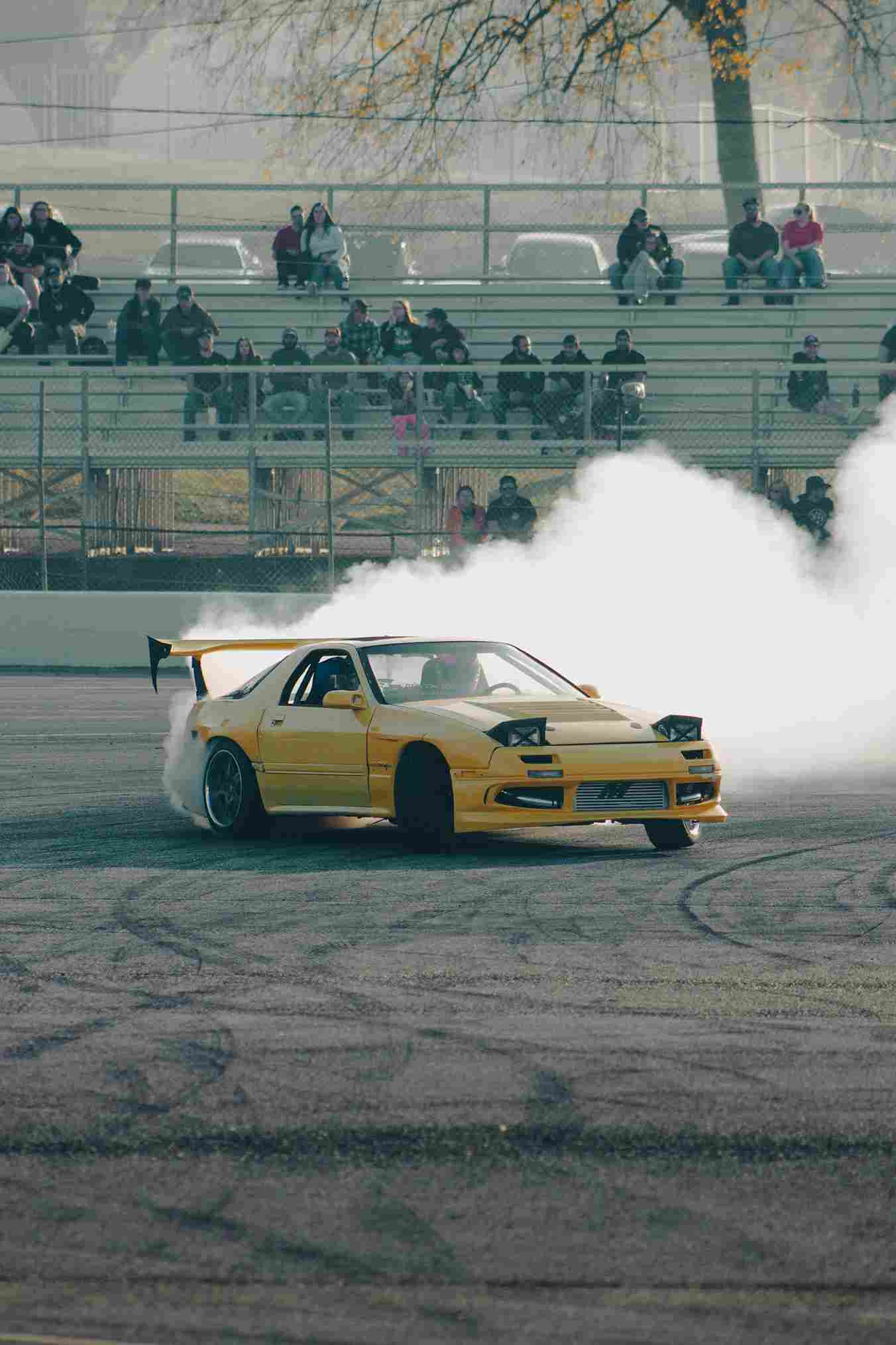80s Sports Cars
Introduction
The car culture in the 1980s changed radically. Flashy, bold, and high-tech, the 80s sports car culture was a golden age for car enthusiasts. These vehicles were not made to be fast alone—these represented power, technology, and freedom. With their space-age design, turbochargers, and advanced features, 80s sports cars stunned drivers across the globe and paved the way for high-performance cars today. In this history of sports cars, we reveal what distinguished 80s sports cars and delve into the enduring models, pioneering engineering innovations, and enduring cultural legacy.
Turbocharged Performance and Engineering Evolution
Arguably most revolutionary feature of 80s sports cars was the widespread use of turbo charging. As everyone wanted more gas mileage and emission restrictions kept ratcheting downward, companies began to exploit the potential of turbocharged engines as a means of keeping horsepower alive while being economical. This brought into being some true legends of cars. Look at the Porsche 944 Turbo, for example; it provided blistering acceleration and sophisticated handling that made it a class leader. The Nissan 300ZX Turbo, too, married form and power, with a fantastic ride thanks to its twin-turbo V6 engine.
These 80s performance automobiles turbocharged shifted priorities for engineering. Rather than utilizing brute displacement, firms focused on efficiency and poise. It is this that ensured drivers felt responsive motors that were just as adept on the highway as the track. By the end of the decade, turbo charging was the badge of honour of the performance division.
Design Language That Defined an Era
Other than performance, the look of 80s sports cars was a signature that defined the era. They possessed aggressive angles, low-slung bodies, and omnipresent pop-up headlights that were instantly identifiable. Consider, for example, the Ferrari Testcross, with its broad track and sinuous side strakes that screamed 1980s performance and luxury. It was flamboyant, in-your-face brazen, and a poster car for a generation.
But perhaps the most memorable design was the Toyota MR2, the trendy mid-engine sports car of the time. It had tiny size paired with high-revving performance and firm handling, which attracted a following of drivers who drove the car hard. The Mazda RX-7, particularly the second-generation FC version, also became known for its low-slung coupe profile and rotary engine—a unconventional choice that contributed to the variety of 80s sports cars.
80s styling wasn’t merely about appearance—it was a mindset shift in the motor car industry. The cars were futuristic, aspiration, and now available to more people than ever.
Japanese Innovation Takes Centre Stage
Japanese manufacturers’ entry was central to defining the 80s sports cars market. The Toyota, Mazda, Honda, and Nissan firms established the benchmark with innovative, durable, and incredibly low-cost performance vehicles. These cars typically boasted better handling, lighter weight, and superior fuel economy than European and American competitors.
The Mazda RX-7, rotary-powered, light, and nearly ideally balanced, was a favourite of track rats and tuners alike. Nissan’s 300ZX was no less impressive, with technological advances such as digital gauges and electronic climate control, coupled with a performance package that could give European sports cars a run for their money. The Honda Prelude, more sport coupe in nature, featured such innovations as four-wheel steer and an emphasis on driver-oriented design.
Japanese 80s sports cars not only matched up but usually bested the competition on price-to-performance ratio, which formed powerful loyalty among fans that continues to this day.
The American Take on 80s Sports Cars
While the American companies had swept the market of muscle cars throughout the 60s and 70s, the 1980s required a shift in policy. The premium price of insurance and fuel emergencies had changed the taste of the people. Thus, the American brands started to manufacture finer 80s sports cars that matched the international standards.
The 1984 Chevrolet Corvette C4 was a giant leap forward. It possessed a light metal aluminium suspension, electronic dashboard, and extremely cutting-edge styling. With improved power and aerodynamics, it established the Corvette as a sports car force to be dealt with again. Ford tampered with the Mustang SVO, a four-banger turbocharged engine set up for maximum handling and thrift rather than maximum grunt. These trends marked a watershed moment in the evolution of American sports cars—a transformation that continues to influence design and performance choices today.
Advances in Driving Experience

The 1980s welcomed a succession of emerging technologies that made 80s sports cars more advanced than their forebears. Cars started to use fuel injection instead of carburettors, becoming more efficient and reliable. Limited-slip differentials, electronic suspension units, and even digital gauges started appearing on lower-cost models.
Perhaps most important, though, was the development of onboard computers. Cars like the Toyota Supra and Nissan 300ZX had digital readouts and voice alerts—accoutrements that appeared futuristic then. Such integration of electronics was an early start toward more intelligent and more responsive car action, a development that has only accelerated since.
On many fronts, technology of 80s sports cars opened the way for the driver aids and entertainment systems now common.
Pop Culture and the Legacy of 80s Sports Cars
Few cars have ever been as integral to popular culture as 80s sports cars. They were everywhere—on film, on television, on music videos, and in video games. In the same way, the Ferrari 308 GTS that Tom Slack drove on Magnum P.I. ensured Ferrari held their place in Americans’ hearts. Even video games like Out Run introduced kids to familiarization with the experience of driving exotic 80s sports cars at racing speed in virtual environments.
This media publicity placed the reputations of these cars well out of the showroom. They became symbols of youth, rebellion, and success—a status which still appeals to collectors and aficionados today.
The Lasting Lure of 80s Sport Cars

Even today, decades down the line, the popularity for 80s sports cars doesn’t subside. In recent years, their retro charm has witnessed a giant leap in price, with near-mint specimens of models such as Toyota Supra MK3, Mazda RX-7 FC, and Porsche 944 increasing in demand with each passing year. Their retro style of driving, mechanical efficiency, and enduring design are being coveted by the collectors.
In a time of hyper-automated electric performance cars and hyper-dependent cars, 80s sports cars provide an unapologetic, immersed experience that simply can’t be found elsewhere. Whether it is the whine of a spooling turbo, the click-clack of a manual transmission, or the unrestrained sensation of unpowered steering during a turn, these cars engage drivers.
Conclusion
The 80s sports car era is an excellent and fascinating era of car history. It was the era of creativity, passion, and innovation—where design and performance came together to create cars as fun to drive as they were to gaze at. And thus, through this history of 80s sports cars, we have learned that the heritage of 80s sports cars lives on in car design of the present day and in the minds and hearts of automobile enthusiasts worldwide. No matter if you’re a collector, an old-school driver, or just a car aficionado, the world of 80’s sports cars has something uniquely great—a combination of style, content, and personality that will never go out of style.





Pingback: 80s Sports Cars Under 80k - AUTOENTHUSE
I think this web site has some very fantastic information for everyone. “In this world second thoughts, it seems, are best.” by Euripides.
What’s Happening i’m new to this, I stumbled upon this I’ve found It absolutely helpful and it has helped me out loads. I hope to contribute & aid other users like its helped me. Great job.
I’m impressed, I have to say. Actually hardly ever do I encounter a blog that’s each educative and entertaining, and let me inform you, you have hit the nail on the head. Your concept is excellent; the difficulty is something that not enough people are talking intelligently about. I’m very happy that I stumbled across this in my seek for something relating to this.